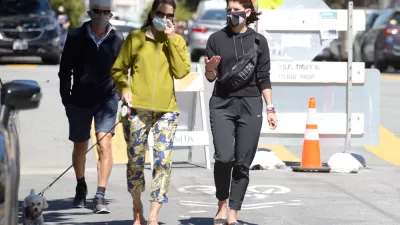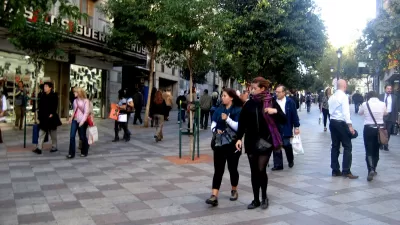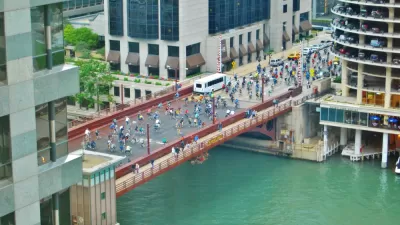Historical reports from the Regional Plan Association show that car-free streets is an idea almost as old as automobiles themselves.

A brief history of the Regional Plan Association’s research into road design and open streets highlights the deep roots of challenges cities still face today. Sidney Essex writes, “Recently, we unearthed from the RPA archives a New York Times article from 1928 that summarized a recommendation from the Regional Plan of New York and its Environs - also known as the First Regional Plan — about the inequity of pedestrian-free highways without parallel automobile-free urban streets.”
Almost a century later, advocates for open streets, including RPA, are making similar arguments. In 1928, RPA touted the economic benefits of open streets, pointing to the lower cost of building car-free streets. In their 2021 report, Re-Envisioning the Right of Way, they returned to economic benefits in a new way. “The research instead explored the potential of considering our shared streetscapes to be part of an integrated natural, transportation, and social system that can support local economies and food production.”
In 1928, RPA warned that giving up parts of residential streets to light industry leads to the loss of usable public space for pedestrians. “In 2021, RPA attempted to navigate this old tension between commerce and pedestrians by holding a symposium on the impacts and opportunities of e‑commerce in the region, which brought leading thinkers in the fields of supply chain management, transportation, land use, public finance, and waste management together to envision a region in which commerce is convenient, safe for pedestrians, and sustainable.”
FULL STORY: Open Streets Are an Old Idea Whose Time Has Come

Manufactured Crisis: Losing the Nation’s Largest Source of Unsubsidized Affordable Housing
Manufactured housing communities have long been an affordable housing option for millions of people living in the U.S., but that affordability is disappearing rapidly. How did we get here?

Americans May Be Stuck — But Why?
Americans are moving a lot less than they once did, and that is a problem. While Yoni Applebaum, in his highly-publicized article Stuck, gets the reasons badly wrong, it's still important to ask: why are we moving so much less than before?

Research Shows More Roads = More Driving
A national study shows, once again, that increasing road supply induces additional vehicle travel, particularly over the long run.

Which US Rail Agencies Are Buying Zero-Emissions Trains?
U.S. rail agencies are slowly making the shift to zero-emissions trains, which can travel longer distances without refueling and reduce air pollution.

San Diego School District Approves Affordable Housing Plan
The district plans to build workforce housing for 10 percent of its employees in the next decade and explore other ways to contribute to housing development.

Lawsuit Aims to Stop NYC’s ‘City of Yes’ Zoning Reforms
A lawsuit brought by local lawmakers and community groups claims the plan failed to conduct a comprehensive environmental review.
Urban Design for Planners 1: Software Tools
This six-course series explores essential urban design concepts using open source software and equips planners with the tools they need to participate fully in the urban design process.
Planning for Universal Design
Learn the tools for implementing Universal Design in planning regulations.
City of Moreno Valley
Institute for Housing and Urban Development Studies (IHS)
City of Grandview
Harvard GSD Executive Education
NYU Wagner Graduate School of Public Service
City of Cambridge, Maryland
Newport County Development Council: Connect Greater Newport





























